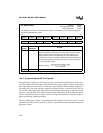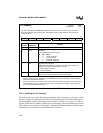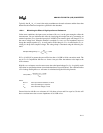
8XC196MC, MD, MH USER’S MANUAL
12-14
In many applications, it is less critical to record the absolute accuracy of an input than it is to de-
tect that a change has occurred. This approach is acceptable as long as the converter is monotonic
and has no missing codes. That is, increasing input voltages produce adjacent, unique output
codes that are also increasing. Decreasing input voltages produce adjacent, unique output codes
that are also decreasing. In other words, there exists a unique input voltage range for each 10-bit
output code that produces that code only, with a repeatability of typically ± 0.25 LSBs (1.5 mV).
The inherent errors in an analog-to-digital conversion process are quantizing error, zero-offset er-
ror, full-scale error, differential nonlinearity, and nonlinearity. All of these are transfer function
errors related to the A/D converter. In addition, temperature coefficients, V
CC
rejection, sample-
hold feedthrough, multiplexer off-isolation, channel-to-channel matching, and random noise
should be considered. Fortunately, one absolute error specification (listed in datasheets) de-
scribes the total of all deviations between the actual conversion process and an ideal converter.
However, the various components of error are important in many applications.
An unavoidable error results from the conversion of a continuous voltage to an integer digital rep-
resentation. This error, called quantizing error, is always ± 0.5 LSB. Quantizing error is the only
error seen in a perfect A/D converter, and it is obviously present in actual converters. Figure 12-9
shows the transfer function for an ideal 3-bit A/D converter.


















